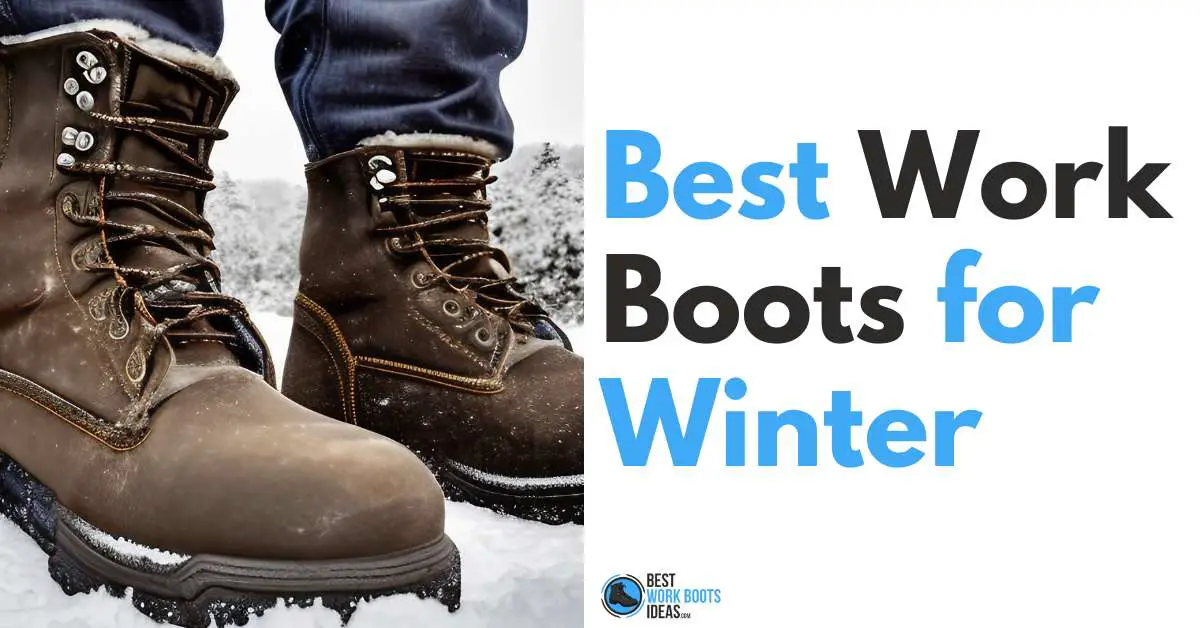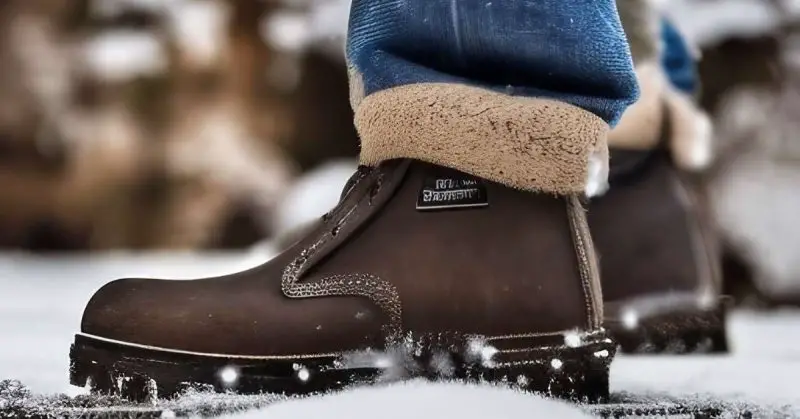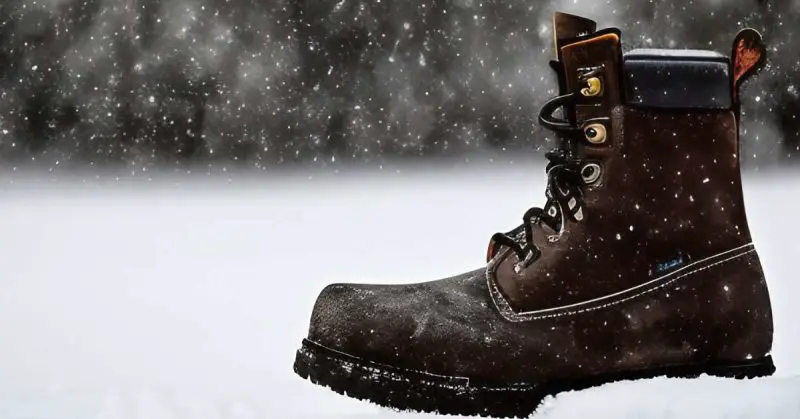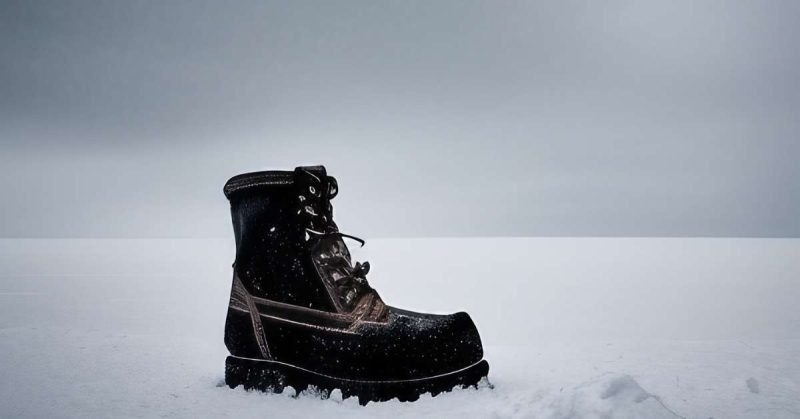Best Work Boots for Winter: An All-Inclusive Guide

When working in chilly weather, having appropriate gear is crucial for comfort, safety and overall performance.
This all-inclusive guide will walk you through the best winter work boots focusing on key features like insulation, waterproofing, traction and durability.
We’ll also discuss various safety toes, materials and technologies to help you find the perfect pair for your needs.
For an in-depth look at the top winter work boots including brand recommendations and useful tips to help you select the right footwear for those colder months, read on.
Working in Winter Isn’t Very Nice
Operating in chilly conditions might be difficult, but by wearing the appropriate insulated work boots, you’ll remain comfortable and safe throughout the entire day.
As you navigate through snow, ice and freezing temperatures, I’m sure you can appreciate how crucial it is to have footwear designed to handle these harsh conditions.
In this guide, we’ll cover essential features and materials, as well as popular brands and models of winter work boots.
Whether you need steel toe protection, a waterproof design or a boot with excellent traction, we’ve got you covered…literally!

Why Insulated Work Boots Are Vital for Cold Weather
It doesn’t come as any surprise to tell you that insulation acts as a barrier trapping heat and preventing cold air from entering your boot.
This is particularly important when working in snowy conditions, as the insulation also helps to keep moisture at bay, preventing wet and cold feet.
There are different types of insulation available in work boots, with the most common being Thinsulate™, a synthetic insulation material developed by 3M.
The insulation level is measured in grams, with higher numbers indicating more insulation and warmth.
For example, a 200-gram insulation level is suitable for moderately cold conditions, while a 400-gram level is recommended for colder environments.
For extremely cold temperatures or if you’re prone to cold feet, opt for 800-gram insulation or higher.
In addition to insulation, it’s crucial to take into account other characteristics that enhance warmth and coziness, including water resistance and breathability.
By selecting a boot that combines insulation with these additional features, you’ll ensure a comfortable and productive workday in winter conditions.

Essential Features to Look for in Winter Work Boots
Insulation: As mentioned earlier, insulation is a critical feature in winter work boots. When choosing a boot, consider the insulation type and level to ensure it meets your needs.
Synthetic insulation such as Thinsulate™ (which we talk about here) is a popular choice due to its lightweight and efficient heat-trapping capabilities.
Waterproofing: Wet feet can quickly lead to discomfort and even health issues, so waterproofing is a must for winter work boots.
Look for boots with waterproof materials, such as full-grain leather, and additional waterproof technologies like Gore-Tex® or proprietary brand-specific solutions.
Traction: Traction is crucial for navigating icy or slippery surfaces. Winter work boots should have a rubber outsole designed for superior grip, often featuring lugs or treads for added traction.
Vibram® Arctic Grip is a popular choice for rubber outsoles that provide excellent traction on icy surfaces.
Breathability: Breathability is essential for preventing sweaty feet, which can lead to discomfort and even fungal infections.
Choose boots that incorporate breathable materials and linings designed to remove moisture, which will maintain your feet’s dryness and comfort all day long.
Durability: Winter work boots need to be durable to withstand harsh conditions and daily wear and tear.
Opt for boots made from high-quality materials, such as full-grain leather, and reinforced stitching to ensure they’ll last through multiple seasons.
Safety Toe: Safety toes are essential for protecting your feet from potential hazards, such as falling objects or punctures.
There are several types of safety toes, including steel, composite, and aluminum. We’ll dive deeper into the different safety toe options in the following section.
Types of Safety Toes for Winter Work Boots
There are three main types of safety toes for work boots: steel, composite and aluminum.
Each type of toe cap offers different levels of protection and comfort so make sure you understand the differences before making a buying decision.
Steel Toe: Steel toe work boots are the most traditional and widely used option. They offer strong protection against impact and compression, as well as puncture resistance.
However, steel toes can be heavier and colder than other safety toe options, which may be a drawback in extremely cold environments.
Composite Toe: Composite toe work boots are made from non-metal materials like carbon fiber, plastic, or Kevlar.
They offer similar protection levels as steel toes but are lighter and won’t conduct cold or heat, making them a great choice for winter work boots.
They’re also suitable for work environments with metal detectors, as they won’t set them off.
Aluminum Toe: Aluminum toe work boots are another lightweight alternative to steel toe boots. They offer the same protection levels but are lighter and more comfortable to wear.
However, like steel toe boots, they can conduct cold, so they may not be the best choice for extremely cold conditions.

Top Brands for Winter Work Boots
Several brands are known for producing high-quality winter work boots. Here are a few popular options to consider:
Carhartt: Carhartt is a trusted brand for durable workwear, and their winter work boots are no exception.
With a range of insulated, waterproof, and safety toe options, Carhartt offers reliable footwear designed to withstand the toughest winter conditions.
Timberland PRO: Timberland PRO is known for producing comfortable and durable work boots.
Their winter work boots often feature Thinsulate™ insulation, waterproofing, and various safety toe options, making them an excellent choice for cold weather work environments.
Wolverine: Wolverine is a brand with a long history of producing high-quality work boots.
Their winter work boot lineup includes options with varying insulation levels, waterproofing technologies, and safety toe choices.
A popular choice for workers in cold weather conditions are Wolverine boots that are known for their durability and comfort.
KEEN Utility: KEEN Utility is another reputable brand offering winter work boots with impressive features.
Their insulated work boots provide warmth and protection, while their waterproofing technologies keep your feet dry in wet conditions.
KEEN Utility boots are also known for their comfortable fit and innovative safety toe designs.
Red Wing: Red Wing is a brand synonymous with quality and craftsmanship.
Their winter work boots feature full-grain leather construction, Thinsulate™ insulation, and various safety toe options.
Red Wing boots are built to last, providing workers with reliable footwear for the harshest winter conditions.
How to Properly Care for Winter Work Boots
Proper care and maintenance of your winter work boots can significantly extend their lifespan and ensure optimal performance. Here are a few tips to keep your boots in top shape:
- Clean your boots regularly: Remove dirt and debris after each use by brushing or wiping them down. For more thorough cleaning, use a damp cloth or soft brush and mild soap.
- Dry your boots properly: If your boots become wet, remove the insoles and let them air dry at room temperature. Avoid placing them near direct heat sources, as this can damage the materials and cause them to crack.
- Condition the leather: To maintain the leather’s integrity, apply a leather conditioner or oil periodically. This helps to prevent cracking and ensures the leather remains supple and water-resistant.
- Rotate your boots: If possible, rotate between two pairs of winter work boots to allow each pair to dry out and recover between uses. This can help extend the lifespan of each pair.
- Replace worn-out components: Inspect your boots regularly for signs of wear and tear, such as damaged outsoles or worn-down treads. Replace any damaged components or invest in a new pair of boots when necessary to ensure optimal performance and protection.
Frequently Asked Questions
Can I use regular snow boots for work? While snow boots may keep your feet warm and dry, they typically lack the safety features and durability required for most work environments.
Winter work boots are specifically designed to offer protection, support, and durability in addition to warmth and waterproofing.
How do I choose the right insulation level for my winter work boots? Take into account the climate and circumstances of your workplace, along with your individual preferences for what makes you comfortable.
Depending on how prone your feet are to the cold, you might want to opt for;
- 200-gram insulation for moderately cold conditions
- 400-gram insulation for colder environments
- 800-gram insulation or higher for extreme cold
How can I prevent sweaty feet in insulated work boots? Search for boots featuring breathable fabrics and linings that draw moisture away, ensuring your feet remain dry and cozy.
Additionally, consider using moisture-wicking socks and applying foot powder to further minimize moisture buildup.
Wrapping Up…(excuse the pun)
To stay comfortable, safe and productive in cold weather conditions, finding the best winter work boots for your needs is essential.
When considering your next winter boot purchase, the key features to look at are insulation, waterproofing, toe cap type and traction.
Based on what you’ve learnt today, I hope you can make an informed decision and invest in a high-quality pair of work boots to keep you warm during the winter.
Don’t forget to also properly care for your boots to ensure they last through multiple seasons and provide the performance you need.

